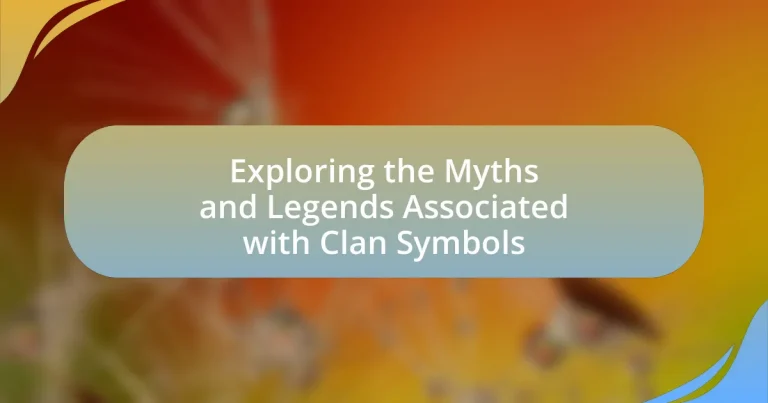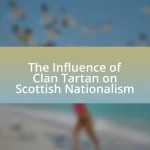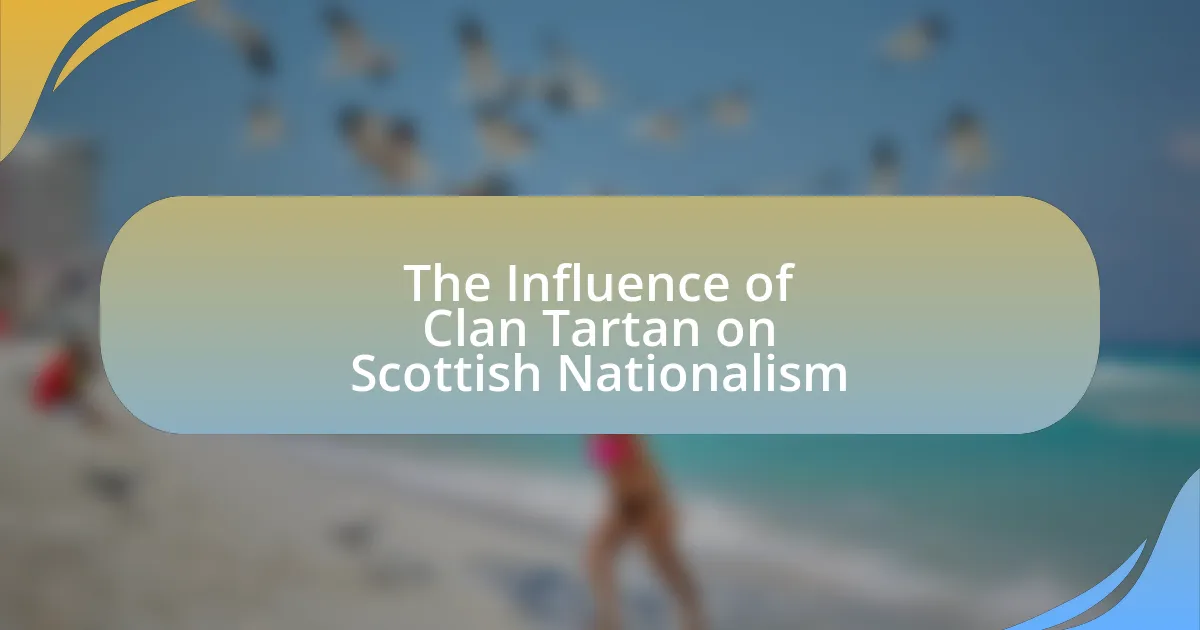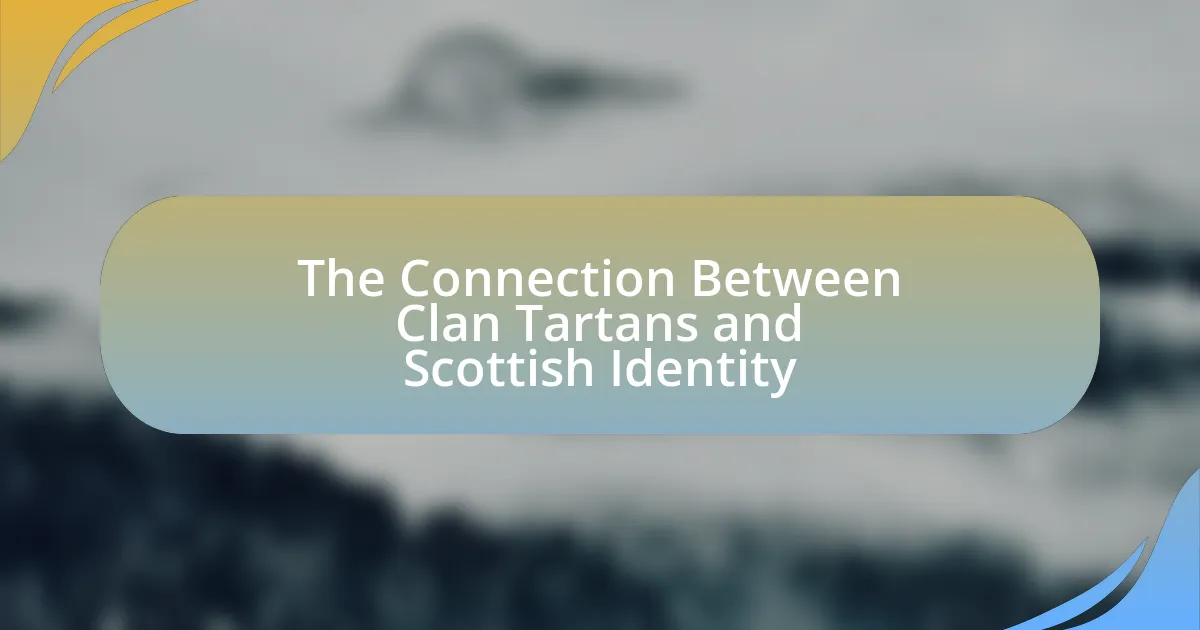Clan symbols are distinctive emblems that represent specific clans, signifying identity, heritage, and unity among members. These symbols often incorporate elements such as animals, plants, and geometric designs, reflecting the clan’s values and historical narratives. The article explores the significance of clan symbols in various cultures, their representation of cultural identity, and the role of myths and legends in shaping their meanings. It also examines how these symbols vary across different cultures, the common themes found in their associated myths, and the impact of historical contexts on their interpretation. Additionally, the article discusses the challenges clans face in preserving their legends today and offers insights into best practices for maintaining these cultural traditions.
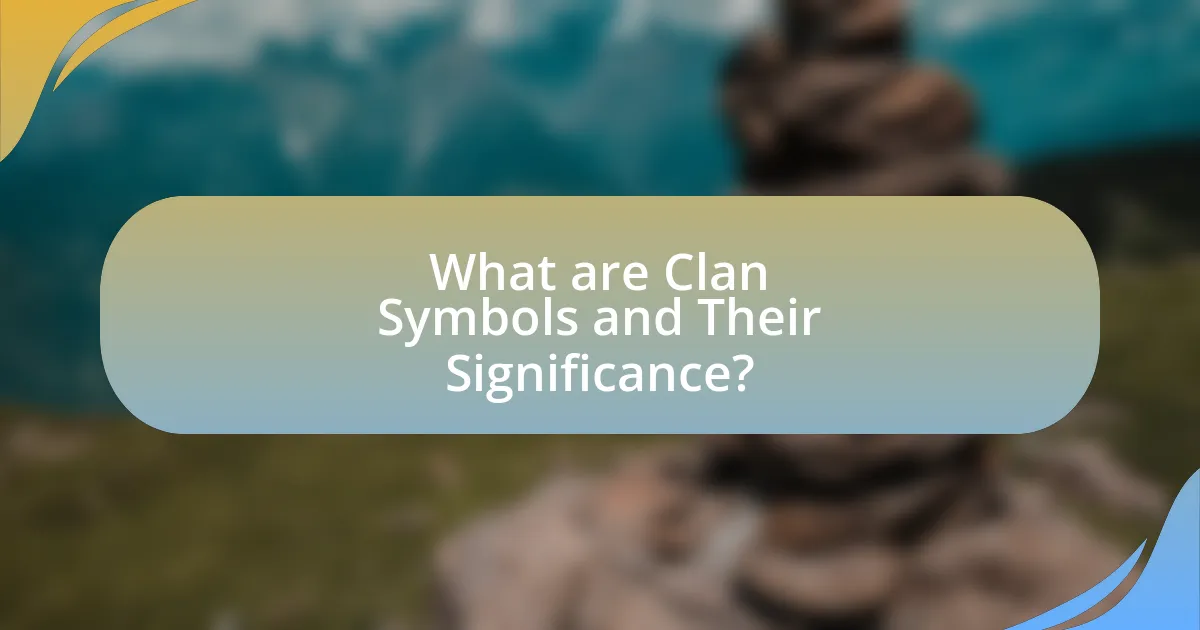
What are Clan Symbols and Their Significance?
Clan symbols are distinctive emblems representing specific clans, often used to signify identity, heritage, and unity among members. These symbols, which can include animals, plants, or geometric designs, serve as visual markers of lineage and cultural significance, often rooted in historical narratives or myths associated with the clan’s origins. For example, in Scottish culture, clan crests and tartans are used to denote family ties and regional affiliations, reinforcing social bonds and a sense of belonging among clan members. The significance of these symbols extends beyond mere identification; they embody the values, history, and traditions of the clan, often celebrated in ceremonies and gatherings, thus preserving cultural heritage across generations.
How do Clan Symbols represent cultural identity?
Clan symbols represent cultural identity by serving as visual representations of shared heritage, values, and beliefs within a community. These symbols often encapsulate historical narratives, clan lineage, and significant cultural traits, allowing members to express their belonging and pride. For instance, in Scottish clans, specific tartans and crests are used to signify family ties and regional affiliations, reinforcing a sense of unity and continuity among members. The use of these symbols can be traced back to historical practices where clans would identify themselves in battle or during gatherings, thus solidifying their cultural identity through recognizable emblems.
What elements are commonly found in Clan Symbols?
Clan symbols commonly feature elements such as animals, plants, colors, and geometric shapes. These elements often represent specific traits or values associated with the clan, such as strength, loyalty, or connection to nature. For instance, the use of a lion may symbolize bravery, while a tree could represent growth and stability. Additionally, colors in clan symbols can convey meanings; for example, red often signifies courage, and green may represent fertility or land. The incorporation of these elements is rooted in historical traditions, where clans used symbols to convey identity and heritage, making them easily recognizable within their communities.
How do Clan Symbols vary across different cultures?
Clan symbols vary significantly across different cultures, reflecting unique historical, social, and spiritual contexts. For instance, in Scottish culture, clan symbols often include specific animals or plants that represent the clan’s heritage and values, such as the thistle for the MacLeods. In contrast, Native American tribes utilize symbols that embody their connection to nature and spirituality, with totems representing ancestral lineage and tribal identity. Additionally, in African cultures, clan symbols may include intricate patterns or colors that signify social status, lineage, or tribal affiliation, such as the use of specific colors in Maasai beadwork. These variations illustrate how clan symbols serve as vital cultural identifiers, encapsulating the beliefs and traditions of each group.
Why are Myths and Legends Important in Understanding Clan Symbols?
Myths and legends are crucial for understanding clan symbols because they provide the cultural narratives and historical context that shape the meanings of these symbols. Clan symbols often embody the values, beliefs, and identities of the group, which are deeply rooted in the stories passed down through generations. For instance, a clan symbol may represent a legendary ancestor or a significant event that defines the clan’s heritage, thus linking the symbol to the collective memory and identity of its members. This connection is evidenced by the fact that many clans use specific symbols to commemorate their origins and significant historical figures, reinforcing the importance of myths and legends in interpreting these visual representations.
What role do myths play in the creation of Clan Symbols?
Myths play a crucial role in the creation of Clan Symbols by providing a narrative framework that imbues these symbols with meaning and identity. Clan Symbols often derive their significance from the stories and legends associated with them, which reflect the values, history, and beliefs of the clan. For instance, many clans adopt symbols that represent ancestral heroes or mythical creatures, linking their identity to these figures and reinforcing a sense of belonging and continuity. This connection is evident in various cultures, where symbols like totems or crests are not merely decorative but serve as embodiments of the clan’s mythology, illustrating their origins and guiding principles.
How do legends enhance the meaning of Clan Symbols?
Legends enhance the meaning of Clan Symbols by providing rich narratives that contextualize and deepen their significance. These stories often explain the origins, values, and historical events associated with the symbols, thereby creating a stronger emotional and cultural connection for clan members. For instance, a clan symbol representing a specific animal may be linked to a legend that describes a heroic ancestor’s encounter with that animal, illustrating bravery and resilience. This narrative not only reinforces the identity of the clan but also serves as a moral guide, embedding shared values within the symbol itself.
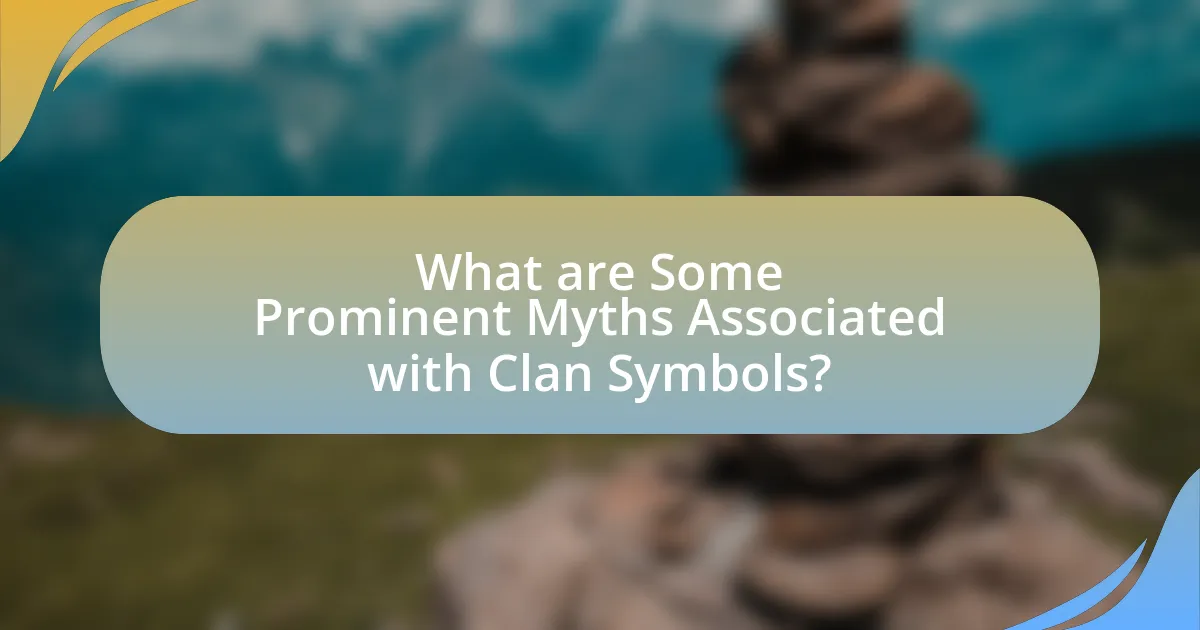
What are Some Prominent Myths Associated with Clan Symbols?
Prominent myths associated with clan symbols include the belief that these symbols possess magical powers and can influence the fate of the clan. Many cultures assert that clan symbols serve as protective talismans, believed to ward off evil spirits and bring good fortune. Additionally, there is a myth that clan symbols can only be used by members of the clan, reinforcing a sense of exclusivity and identity. Historical evidence shows that clan symbols often represented lineage and heritage, serving as a means of communication and unity among members, which further solidifies their cultural significance.
How do specific myths shape the interpretation of Clan Symbols?
Specific myths significantly influence the interpretation of Clan Symbols by providing cultural narratives that imbue these symbols with meaning. For instance, in many Indigenous cultures, clan symbols often represent ancestral stories or spiritual beliefs that are passed down through generations, thus shaping the identity and values of the clan. The connection between the myth and the symbol can be seen in the way certain animals or natural elements are depicted; for example, a clan may adopt a bear symbol based on a myth that attributes strength and protection to the bear, reinforcing the clan’s identity as fierce protectors. This relationship between myth and symbol is crucial, as it not only conveys historical significance but also fosters a sense of belonging and continuity within the community.
What are examples of myths linked to particular Clan Symbols?
Examples of myths linked to particular Clan Symbols include the Scottish Clan Campbell’s association with the “Crown” symbol, which represents loyalty to the Scottish crown and is tied to the myth of their ancestral ties to royalty. Another example is the Clan MacLeod’s use of the “Hawk” symbol, which is linked to the myth of their legendary ancestor Leod, who was said to have been guided by a hawk to his new lands. These symbols not only represent the clans but also encapsulate stories of heritage and valor, reinforcing the clans’ identities and histories.
How do these myths influence clan behavior and values?
Myths significantly influence clan behavior and values by shaping identity, guiding moral principles, and fostering unity among members. These narratives often embody the clan’s history, ideals, and cultural heritage, which members internalize and reflect in their actions. For instance, a clan myth that emphasizes bravery may lead members to value courage in their daily lives and decisions, reinforcing a collective identity centered around strength and honor. Additionally, these myths serve as a framework for social norms, dictating acceptable behaviors and reinforcing loyalty to the clan. Historical examples, such as the Scottish clans, illustrate how myths surrounding ancestral heroes and legendary battles instill a sense of pride and belonging, ultimately guiding clan members’ interactions and commitments to one another.
What are the common themes found in Clan Symbol myths?
Common themes found in Clan Symbol myths include identity, ancestry, and connection to nature. These myths often emphasize the importance of clan heritage, illustrating how symbols represent the values and beliefs of a community. For instance, many clans use animals or natural elements as symbols, which reflect their relationship with the environment and convey traits such as strength or wisdom. Additionally, these myths frequently explore the idea of unity and belonging, reinforcing social bonds among clan members. Historical examples, such as the use of totem poles by Indigenous tribes in North America, demonstrate how these symbols encapsulate clan stories and serve as a visual representation of their collective identity.
How do themes of bravery and honor manifest in these myths?
Themes of bravery and honor manifest in these myths through the portrayal of heroic figures who undertake perilous quests and face formidable adversaries to protect their clans and uphold their values. For instance, in many myths, characters demonstrate bravery by confronting overwhelming odds, such as battling mythical beasts or defending their homeland against invaders, which reinforces the cultural significance of courage. Honor is often depicted through acts of loyalty and sacrifice, where protagonists prioritize their clan’s welfare over personal gain, exemplified by narratives that highlight the importance of maintaining one’s word and fulfilling promises, thereby solidifying the moral framework within which these myths operate.
What role do animals and nature play in Clan Symbol myths?
Animals and nature serve as central elements in Clan Symbol myths, representing the identity, values, and beliefs of the clans. These symbols often embody specific traits associated with particular animals, such as strength, wisdom, or agility, which reflect the clan’s characteristics and aspirations. For instance, in many Indigenous cultures, the bear symbolizes courage and leadership, while the eagle represents vision and freedom. The connection to nature reinforces the clan’s relationship with the environment, emphasizing respect and harmony with the natural world. This relationship is evident in various myths where animals are depicted as guides or protectors, illustrating the importance of these beings in the spiritual and cultural narratives of the clans.

How Can We Analyze the Legends Surrounding Clan Symbols?
To analyze the legends surrounding clan symbols, one must examine historical texts, oral traditions, and cultural contexts that provide insight into the meanings and origins of these symbols. Historical texts, such as clan histories and genealogies, often document the significance of symbols and their associated legends, revealing how they reflect the values and beliefs of the clan. Oral traditions, passed down through generations, offer narratives that explain the symbolism and its relevance to clan identity. Additionally, understanding the cultural context, including the geographical and social factors influencing the clan, can illuminate how these symbols evolved over time. For instance, the Scottish clan system often ties symbols to specific historical events or figures, which can be traced through documented clan battles or alliances. This multifaceted approach ensures a comprehensive understanding of the legends and their implications for clan identity and heritage.
What methods can be used to study the legends of Clan Symbols?
To study the legends of Clan Symbols, researchers can employ methods such as historical analysis, ethnographic studies, and comparative mythology. Historical analysis involves examining primary sources like clan records, manuscripts, and oral histories to trace the origins and evolution of symbols. Ethnographic studies focus on fieldwork, where researchers engage with clan members to gather narratives and interpretations of symbols in their cultural context. Comparative mythology allows scholars to analyze similarities and differences between clan symbols and legends across various cultures, providing insights into shared themes and meanings. These methods collectively enhance the understanding of the significance and impact of Clan Symbols in cultural heritage.
How do historical contexts influence the legends of Clan Symbols?
Historical contexts significantly influence the legends of Clan Symbols by shaping the narratives and meanings attributed to these symbols over time. For instance, during periods of conflict, such as the Scottish Wars of Independence, clan symbols often became emblematic of resistance and identity, leading to legends that emphasized bravery and loyalty. Additionally, the socio-political landscape, including alliances and rivalries among clans, contributed to the evolution of these legends, as seen in the way certain symbols were adopted or altered to reflect changing allegiances. Historical events, such as battles or treaties, are frequently woven into the legends, providing a framework that connects the symbols to specific cultural memories and collective identities.
What sources are most reliable for researching Clan Symbol legends?
The most reliable sources for researching Clan Symbol legends include historical texts, academic journals, and reputable websites dedicated to genealogy and cultural heritage. Historical texts, such as clan histories and folklore compilations, provide primary accounts and narratives about clan symbols. Academic journals, like those published by the Scottish Historical Review, offer peer-reviewed articles that analyze the significance and evolution of these symbols within cultural contexts. Reputable websites, such as the Clan Heritage Trust, present curated information and resources that are fact-checked and sourced from credible experts in the field. These sources collectively ensure accurate and comprehensive research on Clan Symbol legends.
What impact do these legends have on contemporary clan identity?
Legends significantly shape contemporary clan identity by reinforcing a sense of belonging and continuity among members. These narratives often encapsulate shared values, historical experiences, and cultural heritage, which serve to unite clan members across generations. For instance, clans may invoke legends that highlight heroic ancestors or pivotal events, fostering pride and a collective identity. Research indicates that such stories enhance social cohesion and provide a framework for understanding one’s place within the clan, as evidenced by studies showing that communities with strong mythological ties exhibit higher levels of social trust and cooperation.
How do modern interpretations of legends affect clan unity?
Modern interpretations of legends significantly enhance clan unity by fostering a shared identity and collective purpose among members. These interpretations often reinterpret traditional narratives to resonate with contemporary values and experiences, thereby making them more relevant to current clan members. For instance, clans may emphasize themes of resilience and cooperation found in their legends, which can strengthen bonds and encourage collaboration in modern contexts. Research indicates that when clans actively engage with their legends, such as through storytelling or community events, they reinforce social ties and a sense of belonging, ultimately leading to increased cohesion and unity within the clan.
What challenges do clans face in preserving their legends today?
Clans face significant challenges in preserving their legends today, primarily due to the influence of modern technology and globalization. The rapid spread of digital media often leads to the dilution of traditional narratives, as younger generations may prioritize contemporary forms of entertainment over ancestral stories. Additionally, the loss of language and cultural practices, driven by urbanization and migration, further complicates the transmission of these legends. For instance, UNESCO reports that over 40% of the world’s languages are endangered, which directly impacts the storytelling traditions tied to specific clans. Furthermore, the commercialization of cultural symbols can lead to misrepresentation and appropriation, undermining the authenticity of clan legends.
What practical insights can be gained from exploring Clan Symbols and their myths?
Exploring Clan Symbols and their myths provides practical insights into cultural identity, social cohesion, and historical context. These symbols often encapsulate the values, beliefs, and traditions of a community, serving as a means of fostering unity among members. For instance, the Scottish clan crest not only represents lineage but also conveys stories of bravery and heritage, reinforcing a sense of belonging. Additionally, understanding these symbols can enhance intercultural communication by revealing shared human experiences and values, as seen in the universal themes of kinship and honor present in various clan myths.
How can understanding Clan Symbols enhance cultural appreciation?
Understanding Clan Symbols enhances cultural appreciation by providing insights into the values, history, and identity of specific communities. Clan Symbols often encapsulate the beliefs and traditions of a group, serving as a visual representation of their heritage. For instance, the Scottish clan crest not only identifies lineage but also reflects the clan’s historical significance and achievements, fostering a deeper connection to cultural narratives. By studying these symbols, individuals can gain a richer understanding of the stories and myths that shape a community’s identity, thereby promoting respect and appreciation for diverse cultures.
What are best practices for preserving Clan Symbol traditions?
Best practices for preserving Clan Symbol traditions include documenting the history and significance of each symbol, engaging community members in storytelling and educational activities, and incorporating symbols into cultural events and ceremonies. Documenting ensures that the origins and meanings are recorded for future generations, while community engagement fosters a sense of belonging and continuity. Incorporating symbols into events reinforces their relevance and keeps traditions alive. These practices are supported by anthropological studies that highlight the importance of cultural transmission in maintaining heritage.
